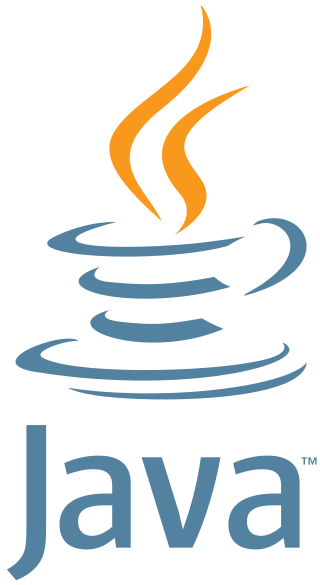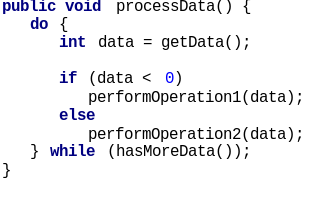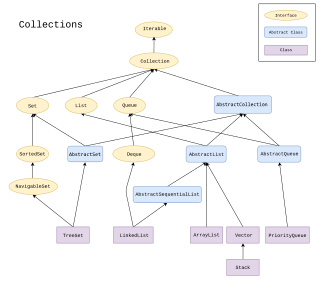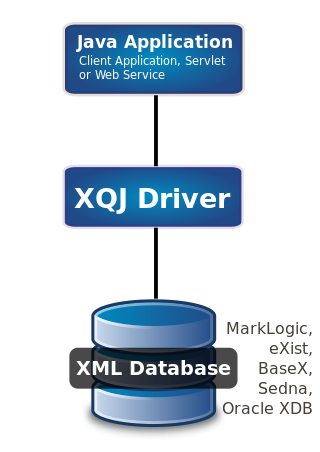Related Research Articles

Java is a high-level, class-based, object-oriented programming language that is designed to have as few implementation dependencies as possible. It is a general-purpose programming language intended to let programmers write once, run anywhere (WORA), meaning that compiled Java code can run on all platforms that support Java without the need to recompile. Java applications are typically compiled to bytecode that can run on any Java virtual machine (JVM) regardless of the underlying computer architecture. The syntax of Java is similar to C and C++, but has fewer low-level facilities than either of them. The Java runtime provides dynamic capabilities that are typically not available in traditional compiled languages. As of 2019, Java was one of the most popular programming languages in use according to GitHub, particularly for client–server web applications, with a reported 9 million developers.
Java Platform, Standard Edition is a computing platform for development and deployment of portable code for desktop and server environments. Java SE was formerly known as Java 2 Platform, Standard Edition (J2SE).
Thread safety is a computer programming concept applicable to multi-threaded code. Thread-safe code only manipulates shared data structures in a manner that ensures that all threads behave properly and fulfill their design specifications without unintended interaction. There are various strategies for making thread-safe data structures.
In object-oriented and functional programming, an immutable object is an object whose state cannot be modified after it is created. This is in contrast to a mutable object, which can be modified after it is created. In some cases, an object is considered immutable even if some internally used attributes change, but the object's state appears unchanging from an external point of view. For example, an object that uses memoization to cache the results of expensive computations could still be considered an immutable object.
In computer science, boxing is the transformation of placing a primitive type within an object so that the value can be used as a reference. Unboxing is the reverse transformation of extracting the primitive value from its wrapper object. Autoboxing is the term for automatically applying boxing and/or unboxing transformations as needed.
This article compares two programming languages: C# with Java. While the focus of this article is mainly the languages and their features, such a comparison will necessarily also consider some features of platforms and libraries. For a more detailed comparison of the platforms, see Comparison of the Java and .NET platforms.

The syntax of Java refers to the set of rules defining how a Java program is written and interpreted.
java.nio is a collection of Java programming language APIs that offer features for intensive I/O operations. It was introduced with the J2SE 1.4 release of Java by Sun Microsystems to complement an existing standard I/O. NIO was developed under the Java Community Process as JSR 51. An extension to NIO that offers a new file system API, called NIO.2, was released with Java SE 7 ("Dolphin").
In computing based on the Java Platform, JavaBeans is a technology developed by Sun Microsystems and released in 1996, as part of JDK 1.1.
In the Java programming language, the final keyword is used in several contexts to define an entity that can only be assigned once.

Scala is a strong statically typed general-purpose programming language which supports both object-oriented programming and functional programming. Designed to be concise, many of Scala's design decisions are aimed to address criticisms of Java.
In the Java computer programming language, an annotation is a form of syntactic metadata that can be added to Java source code. Classes, methods, variables, parameters and Java packages may be annotated. Like Javadoc tags, Java annotations can be read from source files. Unlike Javadoc tags, Java annotations can also be embedded in and read from Java class files generated by the Java compiler. This allows annotations to be retained by the Java virtual machine at run-time and read via reflection. It is possible to create meta-annotations out of the existing ones in Java.

The Java collections framework is a set of classes and interfaces that implement commonly reusable collection data structures.
Generics are a facility of generic programming that were added to the Java programming language in 2004 within version J2SE 5.0. They were designed to extend Java's type system to allow "a type or method to operate on objects of various types while providing compile-time type safety". The aspect compile-time type safety was not fully achieved, since it was shown in 2016 that it is not guaranteed in all cases.
Within computing, Jakarta Activation is a Jakarta EE API that enables developers to:
In computer programming, a constant is a value that should not be altered by the program during normal execution, i.e., the value is constant. When associated with an identifier, a constant is said to be "named," although the terms "constant" and "named constant" are often used interchangeably. This is contrasted with a variable, which is an identifier with a value that can be changed during normal execution, i.e., the value is variable.
InfinityDB is an all-Java embedded database engine and client/server DBMS with an extended java.util.concurrent.ConcurrentNavigableMap interface that is deployed in handheld devices, on servers, on workstations, and in distributed settings. The design is based on a proprietary lockless, concurrent, B-tree architecture that enables client programmers to reach high levels of performance without risk of failures.

XQuery API for Java (XQJ) refers to the common Java API for the W3C XQuery 1.0 specification.
The Java programming language's Java Collections Framework version 1.5 and later defines and implements the original regular single-threaded Maps, and also new thread-safe Maps implementing the java.util.concurrent.ConcurrentMapinterface among other concurrent interfaces. In Java 1.6, the java.util.NavigableMap interface was added, extending java.util.SortedMap, and the java.util.concurrent.ConcurrentNavigableMap interface was added as a subinterface combination.
References
- ↑ S. J. Chapman, Introduction to Java, Prentice Hall, 1999.
- 1 2 3 J. Murach, Murach's Java Programming, 4th Edition, Mike Murach and Associates, Inc., 2011.
- ↑ J. R. Hubbard, Programming with Java, Schaum's Outline Series/McGraw Hill, 1998.
- ↑ David O'Meara (April 2003). "Mutable and Immutable Objects: Which classes are Immutable?". Java Ranch. Retrieved 2012-05-14.
The classes java.math.BigInteger and BigDecimal are not immutable either, although maybe they should have been.
- ↑ Oracle. "Java documentation from oracle".
Immutable arbitrary-precision integers.